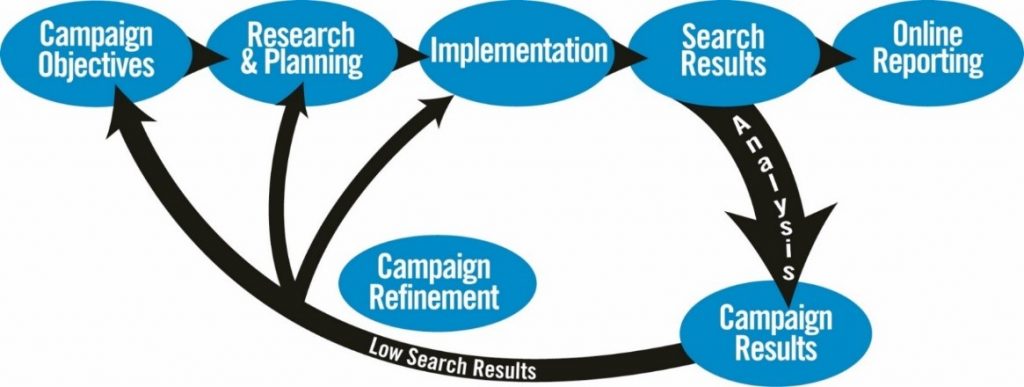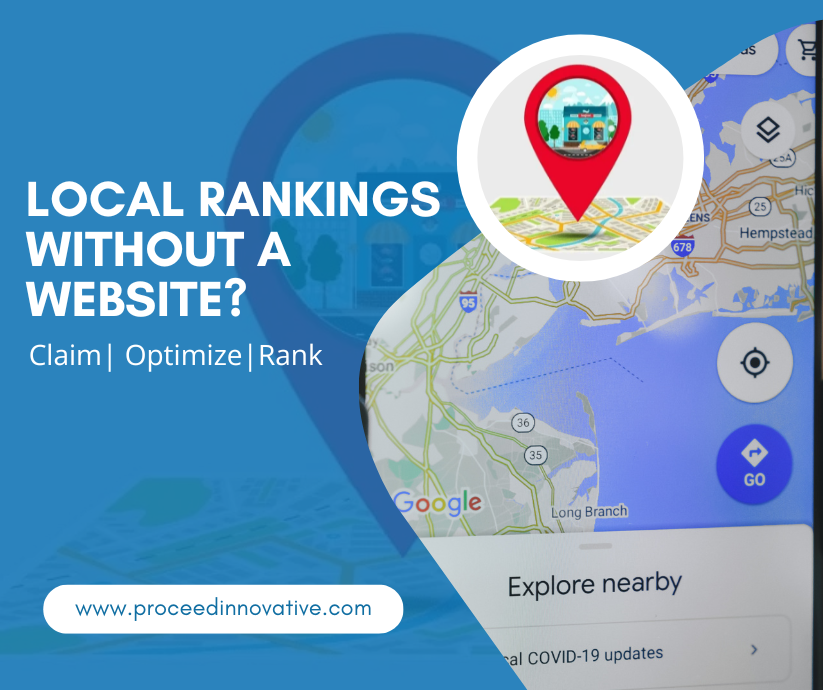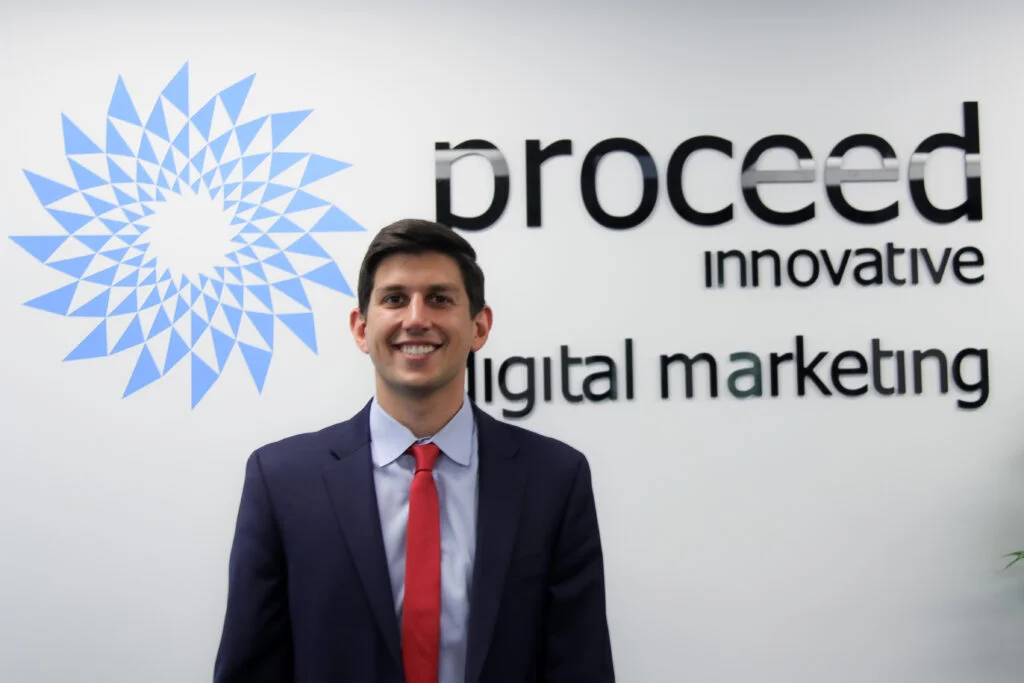With more people beginning their search for products and services on the internet than ever before, effective digital marketing is crucial. However, it is important to remember that the best digital marketing campaigns are not one-dimensional, but multi-faceted to increase leads and conversions and create brand awareness.
Successful digital marketing campaigns usually achieve three main goals: increase leads, boost brand awareness, and generate sales. The success of each of these goals can be measured using several metrics to determine the effectiveness of your digital marketing efforts. It is important to have well defined digital marketing goals so you can determine which metrics best illustrate your progress on achieving your goals. In this guide, we will discuss how to measure the success of your digital marketing campaign using key metrics. Knowing how to measure the success of your digital marketing campaign will help you improve your efforts by continuing with successful strategies and adjusting strategies that do not show the desired results.

If your business does not have the expertise or the resources to run an effective digital marketing campaign, you can work with a professional digital marketing agency like Proceed Innovative. Our search engine optimization (SEO) professionals will form a multi-faceted online marketing campaign and track important metrics to measure its success.
1. Increasing Leads
One of the main goals of digital marketing is to increase leads to help boost sales numbers. The important thing to keep in mind is that each business may determine what they consider to be a lead. A lead may be a phone call, visit to a certain webpage, form submission, or order. Once you have decided what your business considers a lead, you will have a better idea of how to measure your lead generation success.
The following are the most common metrics for measuring lead generation:
Website Traffic
 When it comes to measuring leads, your website traffic is a good place to start. A high volume of traffic indicates a good possibility of generating more leads, but overall traffic numbers can be deceiving. More traffic does not always translate into more leads. Consider the following when measuring website traffic:
When it comes to measuring leads, your website traffic is a good place to start. A high volume of traffic indicates a good possibility of generating more leads, but overall traffic numbers can be deceiving. More traffic does not always translate into more leads. Consider the following when measuring website traffic:
- Overall traffic: If the overall traffic to your website is good, this shows that your SEO efforts are effective in helping people find your website. Check the sources of your traffic. If you have a lot of traffic coming from searches, then you are using the right keywords and have a well-optimized website. If a good amount of traffic is coming via your social media networks, then your social media campaign is effective at attracting new potential customers.
- New or returning traffic: The metrics for both new and returning traffic can be useful in determining digital marketing success. A high number of returning visitors shows that your business is effectively retaining customers and high new traffic shows that you are attracting new potential customers. If one of these metrics is lower than your goal, then reconsider your marketing efforts to help attract new customers or retain your current customers.
- Mobile traffic: More people search for products and services on a mobile device than on any other device which makes mobile traffic an important metric. If you are not getting high visits from mobile devices, evaluate the mobile friendliness of your website. Mobile users are quick to leave a website if it loads slowly or does not display or navigate properly on their device. High mobile traffic indicates that your website is mobile responsive and convenient for mobile users.
- Visitor behavior: Google Analytics gives you the ability to not only track the number of visits to your website, but also visitor behavior while on your website. Check to see which pages users visit once they reach your website. Are they visiting more than one page? Do the same pages tend to attract the most visitors? If certain pages get higher visits, this will tell you what interests your audience most about your business. You should also check the amount of time users spend on your website. The pages with the highest average visit time are the ones that engage your audience the most.
- Bounce rates: Bounce rate is the rate at which visitors immediately leave once they reach your website. If you have a high bounce rate, there could be a number of issues including a low quality or misleading landing page or slow loading time.
Phone Calls
 For many service-based businesses, the number of phone calls is a good indicator of lead generation. Displaying your phone number prominently on each page of your website and including a feature for mobile users to quickly call your business directly from their device will help increase phone conversions. A Google My Business listing that shows up when people search for your services will also help generate more phone calls. An easy way to measure where your phone calls are coming from is to simply ask those who call your business how they found you. You can also use tracking numbers so you can tell how a potential customer found your business.
For many service-based businesses, the number of phone calls is a good indicator of lead generation. Displaying your phone number prominently on each page of your website and including a feature for mobile users to quickly call your business directly from their device will help increase phone conversions. A Google My Business listing that shows up when people search for your services will also help generate more phone calls. An easy way to measure where your phone calls are coming from is to simply ask those who call your business how they found you. You can also use tracking numbers so you can tell how a potential customer found your business.
Form Submissions
The number of form submissions you receive through your website is another indicator of lead generation success. If you receive a lot of form submissions, you can track where they are coming from in Google Analytics to determine which of your digital marketing strategies are working well. If your conversion rate on submitted forms is low, you should evaluate your follow up process.
Live Chat Leads
Live chat features are a great way to generate leads from your website. If your website uses live chat, you can track it with built in tracking or by integrating Google Analytics. This will help you determine the number of leads you get through the live chat and where these leads are coming from.
Conversion Rate
Now that you know the different metrics for measuring lead generation, you can determine the conversion rate within each metric to see which ones are the most effective. A conversion occurs when a potential customer takes the desired action, such as making a purchase or scheduling a service. Once you determine your conversion rate within each metric, you can also calculate your cost per conversion to measure the efficiency of your digital marketing efforts.
2. Brand Awareness
 Increasing your brand awareness is an important part of digital marketing. Good brand awareness will not only result in more people learning about your business, but it will also help build credibility and trust among your audience which will lead to more conversions.
Increasing your brand awareness is an important part of digital marketing. Good brand awareness will not only result in more people learning about your business, but it will also help build credibility and trust among your audience which will lead to more conversions.
The best way to measure the success of building your brand awareness is not through leads and sales, but through the following metrics:
Impressions
The number of impressions, also referred to as reach, is the number of times your content has been seen by users. You can measure impressions on your pay per click (PPC) campaigns, Facebook ads, and many social media accounts using their Insights features. This will show you how many times your content is seen by your target audience. A higher number of impressions will help increase brand awareness and generate more leads. If your impression numbers are low, you will need to adjust your ads or social media strategy.
Click Through Rate (CTR)
Getting impressions for your ad campaigns is good, but the goal is to get users to click on your ads and get to your landing pages. Your click through rate (CTR) will show how effective your ads are at getting users to your website. It is important to remember that CTRs tend to be pretty low, especially if your ads are shown to people unfamiliar with your brand to increase brand awareness. Keep this in mind when determining your benchmark for success with your CTR.
New Website Traffic

We have already discussed tracking new and returning traffic to your website. When it comes to evaluating brand awareness, it is more useful to track new traffic. Google Analytics allows you to track new users as each user who visits your website is given a cookie and unique ID that designates them as a “New User.” When the same user comes back to your website, they are labeled as a “Returning User.”
The “New User” metric is not an exact metric as the same person can visit your website on different devices and be considered a new user each time. A returning user will also be counted as a new user if they have cleared the cookies from their browser. However, the number of new users coming to your website can still help you measure the effectiveness of your brand awareness. Check the percentage of new sessions metric within Google Analytics to see the percentage of new users coming to your website. Keep an eye on this metric to determine the success of your brand awareness campaign.
3. Sales and Conversions
The ultimate goal of all digital marketing campaigns is to increase sales and conversion rates to generate more revenue. To determine how successful your digital marketing campaign is for getting sales and increasing revenue for your company, check the following metrics:
Revenue
First and foremost, you will want to check the revenue your company earns from your website. The sales numbers from your website should be a good indication of how well your digital marketing efforts are bringing in sales. You should also check your sales margin by comparing your sales revenue to your digital marketing costs to make sure you are turning a profit.
Conversion Rate
Whether your business sells products through an ecommerce website or provides services, you should always monitor your conversion rates. If your conversion rates on your ecommerce website are not meeting your benchmarks, then check the traffic sources coming into your website and adjust your digital marketing campaign to bring in more traffic.
Putting the Factors Together
When it comes to determining the value of your digital marketing efforts, you can calculate the profitability using a simple formula:[traffic] x [conversion rate] x [average order/sale value] = revenue.
Using this formula will give you great insight into just how profitable your digital marketing efforts are. Consider where each of these metrics are before implementing any changes. You can increase your revenue by increasing the output of one of these three metrics (traffic, conversion rate, average order value) while getting the same from the other metrics.
Working with a Digital Marketing Agency
 Effective digital marketing can increase your leads, sales, and brand awareness. Consider regularly checking the important metrics mentioned above to ensure that your digital marketing efforts are helping you achieve your goals in each of these areas. If you are putting money into your digital marketing without achieving desired results, then you are wasting your money and effort.
Effective digital marketing can increase your leads, sales, and brand awareness. Consider regularly checking the important metrics mentioned above to ensure that your digital marketing efforts are helping you achieve your goals in each of these areas. If you are putting money into your digital marketing without achieving desired results, then you are wasting your money and effort.
Working with a digital marketing agency like Proceed Innovative can help ensure that your business has an effective digital marketing campaign that increases your revenue and brand awareness. Our SEO professionals will form a multi-faceted marketing plan based on your unique goals and monitor the right metrics to ensure that your digital marketing campaign is delivering the desired results. We will provide you with detailed reports so you can see these metrics and gauge the success of your digital marketing campaign.
You can all Proceed Innovative at (800) 933-2402 or submit a contact form to learn more.






